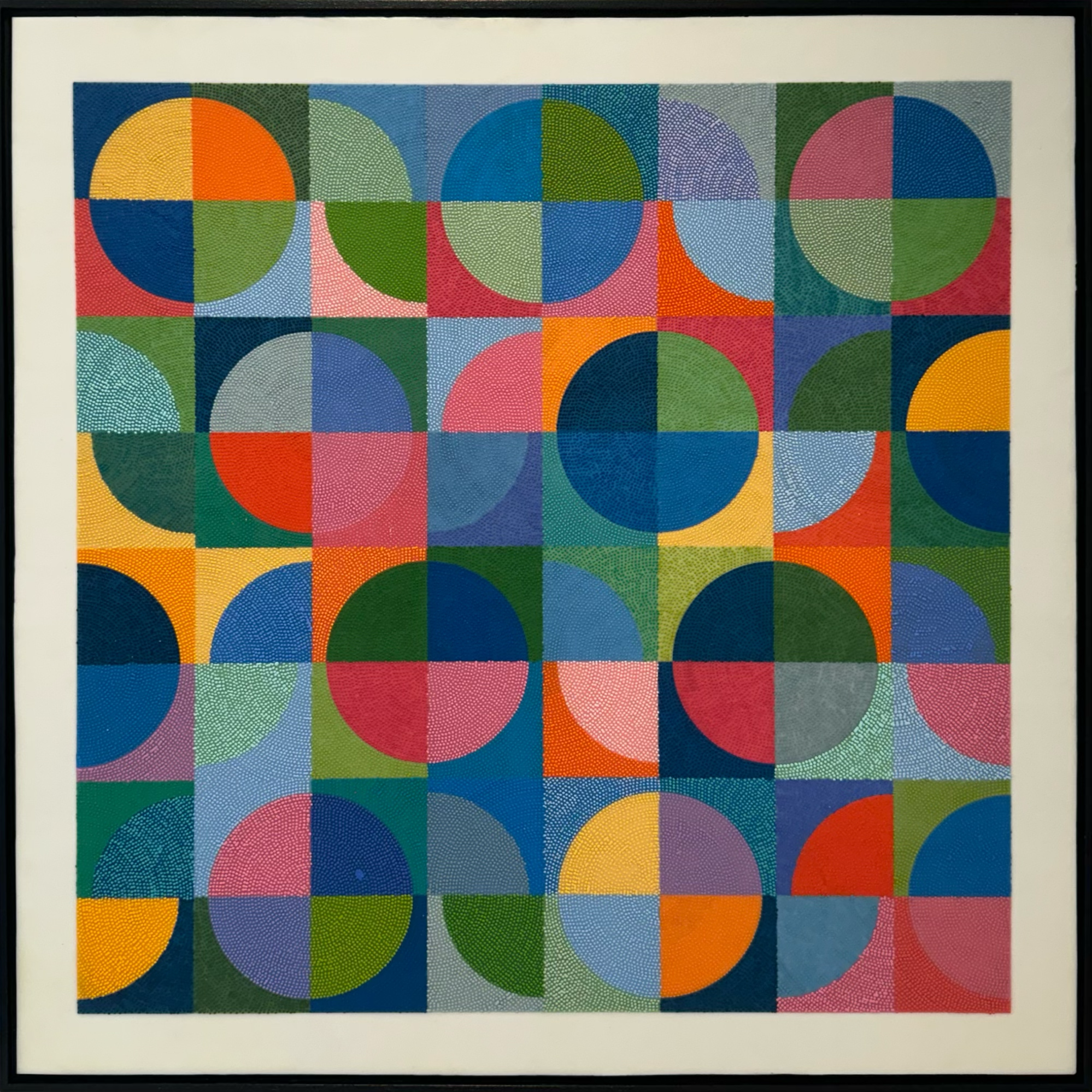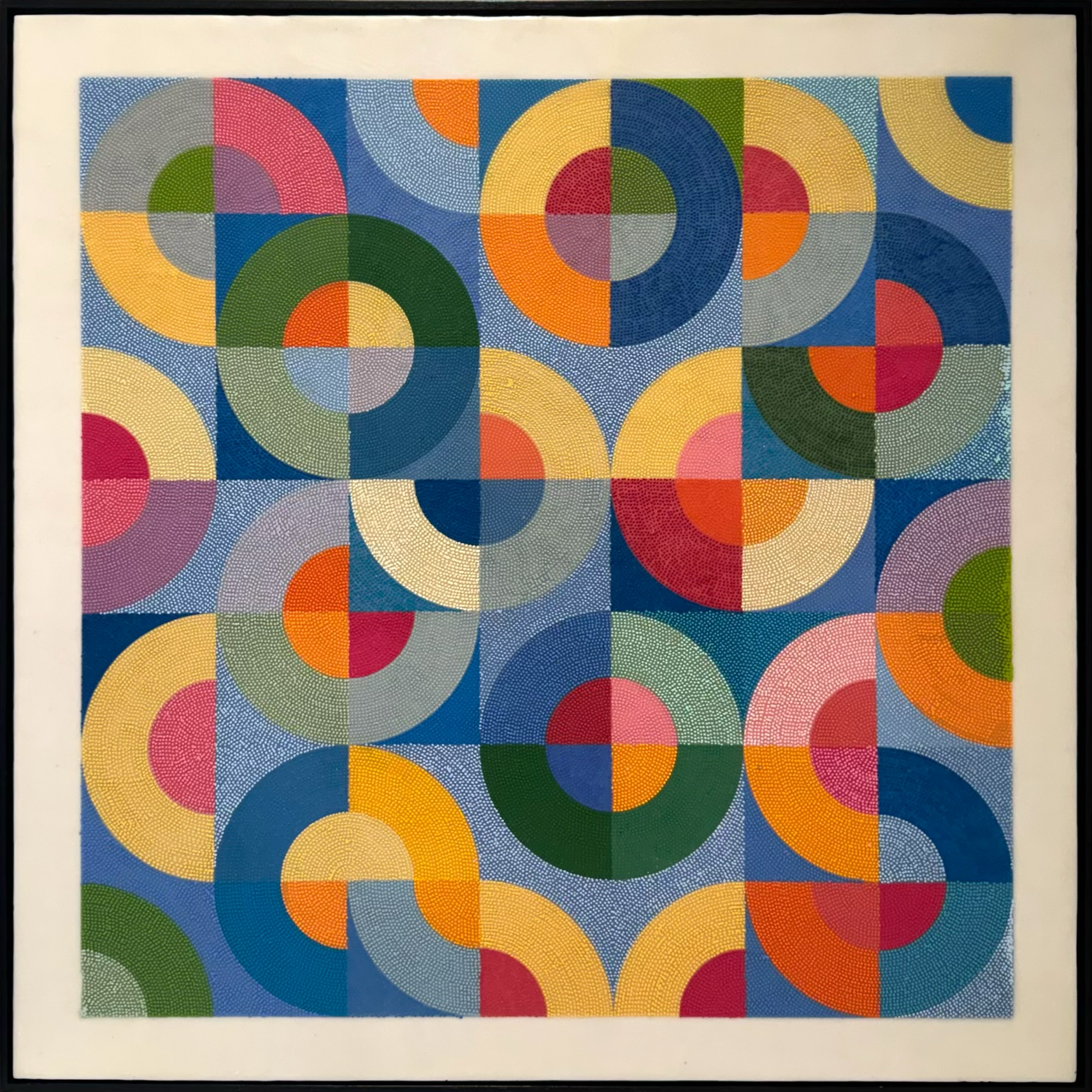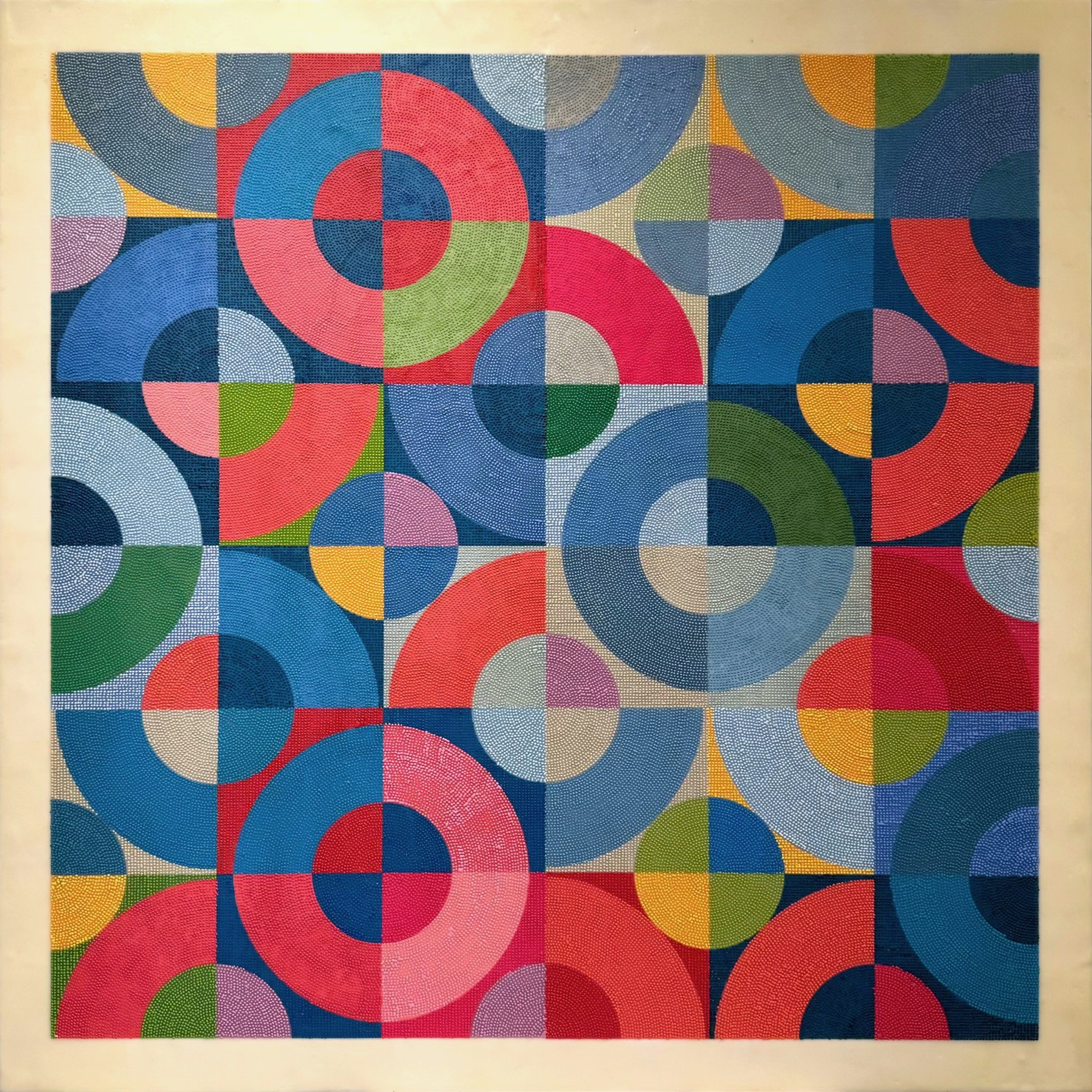Quilting Traditions, Encaustic Transformations
If you’ve ever wandered through a quilt show or browsed vintage quilts online, chances are you’ve come across the distinctive curve of the Drunkard’s Path pattern. It’s one of those classic designs that’s both simple and endlessly versatile, made up of just two shapes: a quarter circle and a square. But behind those gentle curves is a story with roots in American history and social change.
The Drunkard’s Path pattern dates back to at least the 19th century, though its exact origins are a bit murky—like many quilt designs passed down through generations. It gained particular popularity in the late 1800s and early 1900s, during the height of the temperance movement. For many women of that era, quilting was more than just a creative outlet—it was also a way to make a statement. Some believe the twisting, turning layout of the Drunkard’s Path symbolized the stumbling walk of someone under the influence, making the quilt itself a quiet but powerful protest against alcohol.
But this pattern isn’t all seriousness. Its curved seams and endless layout options make it a favorite among quilters looking to play with motion and contrast. Over time, it’s evolved beyond its temperance-era messaging into a beloved design that can be traditional, modern, or anything in between.
Today, quilters still love the Drunkard’s Path for its movement, elegance, and storytelling potential. Whether you’re using bold modern prints or soft vintage florals, this pattern has a way of weaving history right into the fabric.
These patterns aren’t just for quilters, either. I’ve taken the Drunkard’s Path as inspiration for my encaustic paintings, which I call Drunkard’s Path Variations. My “stitching” is made using a wax stylus, tracing curves and intersections that echo the rhythm of the original quilt block in a whole new medium. In my work, I aim to honor the tradition and symbolism of the Drunkard’s Path while reinterpreting it through the lens of contemporary art. The shapes remain familiar, but the materials, textures, and intention are uniquely my own—a personal twist on a path that’s been walked for generations.




